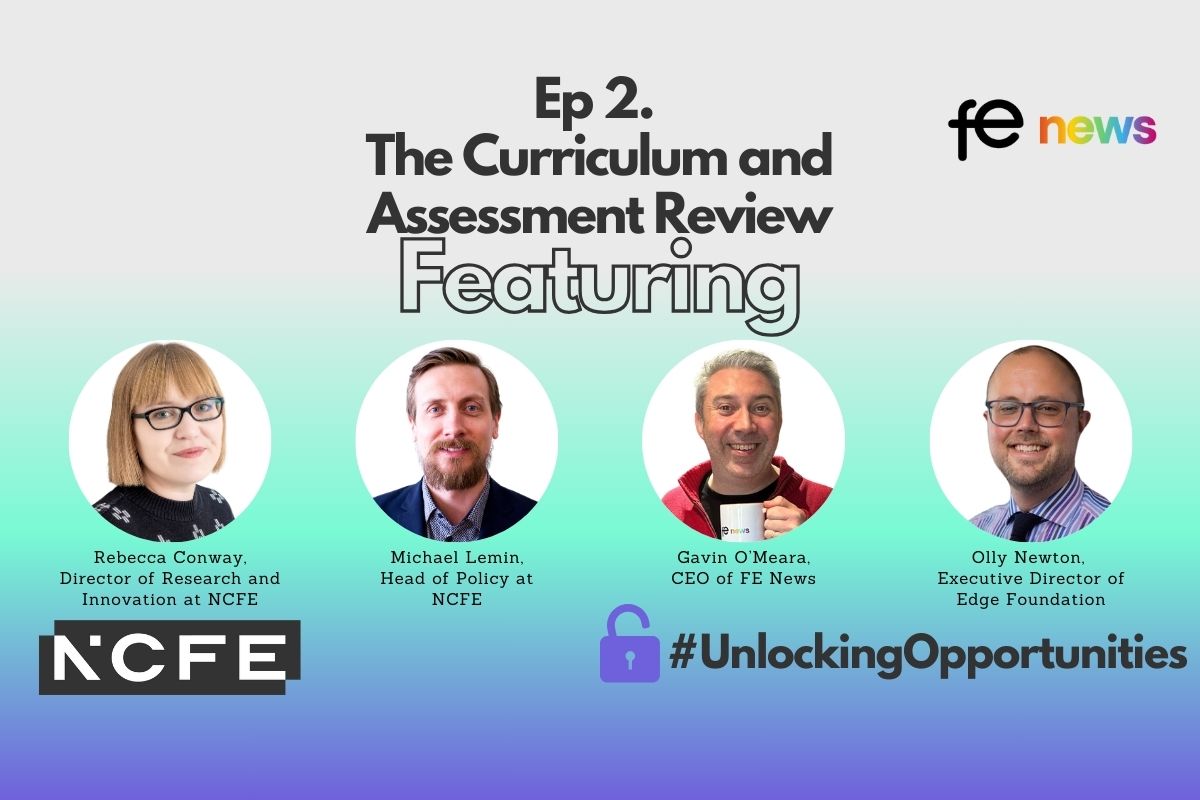Digital Learning – its growing importance in education

Tech’s importance to teachers has been rising for a while, but the demands of lockdown have only increased the necessity of leveraging digital methods in education. This has been, for much of the past year, the only way teachers have been able to maintain contact with pupils, and zoom is now the closest thing most young people have to a classroom. Adapting to and becoming familiar with technological media is, therefore, crucial to maintaining pace with developments in education theory and practice.
Teachers have had to familiarise themselves with IT for a number of years – blackboards have been dropped in favour of smartboards in many cases, Powerpoint presentations are common everywhere, and schools have often embraced the use of email for communication and sometimes assignment submissions. However, tech is now influential not only as a means of delivering information but also as a source of new thinking in teaching methods.
Blended Learning
One method that has risen to prominence in the past year is the concept of ‘blended learning’. This involves giving students a certain level of independence, allowing them to choose the pace they pick up new topics to some extent and to study in a way that works best for them, while consolidating this during face-to-face teaching sessions.
Provided students have access to the internet, they have an enormous variety of free resources at their disposal for independent learning, allowing them to engage more with particular topics that interest them as well as to explore and understand the way they learn best.
Several models of blended learning exist; these include the flipped classroom approach, which has students work with a mix of teacher-led sessions followed by independent tasks on the same subject, as well as rotation methods which alternate between taught lessons, online modules, group discussions and independent work assignments.
By completing some tasks outside the classroom, valuable time is conserved and can be used for group discussion and consolidation, while students are also encouraged to develop academic independence. Given its uses and potential to be adapted as a means of learning in school, blended learning could see continued use post-lockdown, even as we return to the physical classroom.
Cloud Sharing
The use of internet-based cloud technology has been growing for several years, but its use has seen a big boost in schools since last March. The use of cloud sharing allows many students and teachers to view a document anytime and anywhere, as well as to edit it and add feedback. This is enormously advantageous in a time of physical distancing, but now that teachers are more familiar, it will probably also be used beyond lockdown.
This kind of technology is particularly useful for group work or projects, since it allows students to easily work on a single piece together and to have their contributions stack up. It does, however, require all students to have access to devices with this capability as well as reliable internet.
Video Calls
Another primary feature of digitally provided education this year has been the use of video call applications such as Zoom and Google Classroom. While for many people it has been difficult to accept the video call as the new primary medium through which lessons are taught, this technology does provide advantages and opportunities in the structure of learning.
Many schools have been able to make use of the breakout rooms feature, which enables several smaller groups of students to split off and discuss topics among themselves before returning to the larger classroom. Arranging small group discussions is possible in a physical classroom, but it becomes much easier and quicker to organise in a video call since there is no need to rearrange tables or seating plans, and students can discuss in their own groups without being disrupted by the noise of other groups. It is also easy for these groups to work on cloud-shared documents and present them to the class after the breakout session is finished.
Furthermore, teaching via video call allows students to access the internet at the same time, which opens up an enormous variety of online resources to use during and after the lesson.
Apps and AI
With some prior planning, specialised computer applications can be used to aid learning. The processing capabilities of AI can be leveraged to better understand the learning process of specific students, recognising which aspects of a topic they find most difficult and adjusting its delivery – this is known as adaptive learning. It can help to personalise content for students so that they find it easier to absorb; however, the increased individualisation may act as a barrier to group work.
Alternatively, apps can incorporate quizzes and the like to provide a level of gamification, which can aid in keeping student’s attention and allowing them to engage in more independent learning. In some cases, Virtual or Augmented Reality (VR and AR) can be used to provide a different facet to a lesson, although these technologies can be prohibitively expensive for mass use in schools.
A more concentrated approach of this kind is known as learning engineering – it seeks to bring together insights from psychology, computer science, education and engineering to produce a science-based approach to learning. It can incorporate elements of personalisation but most crucially it focuses on the concept of ‘learning how to learn’ as a key element of education. By utilising scientific research and artificial intelligence, it is hoped that advances in educational theory and practice can be made which will improve the way lessons are taught.
Exams
The switch to distanced learning has also heavily impacted the assessment process. Schools and universities have had to consider that students may not always have access to a controlled environment for their assessments at home (and therefore that mitigating circumstances are common).
Many institutions such as universities have chosen to implement an open-book exam policy, in light of the fact that a ban on the use of academic resources would be almost unenforceable. Others have decided to assess performance based on work produced throughout the year, with teachers having the most say.
In any case, exams and assessments are no longer conducted with all students together in a hall, with desks neatly spaced and minimally equipped. Digital devices at home have replaced exam papers as the usual medium.
The fact that it is possible to conduct assessments at all without physical contact is owed to the recent spread and availability of devices with rapid internet speeds and the proliferation of online tools for easy communication; however, the impossibility of conducting assessments in identical exam conditions for all students does put the value of assessments in these times into question.
Virtual Reality
Education is often enhanced by worldly experience; schools conduct field trips when they can in order that students may better understand a concept that hinges on material or space, such as in the fields of geology, history, biology or art. However, since field trips have been generally impossible for the past year, teachers must look for other ways of bringing a topic to life for their students.
One solution to this problem has been the inclusion of Virtual Reality (VR) technology in remote classes. VR allows people to experience the sights and sounds of locations around the world through the use of headsets and audio equipment. For many, this is the closest they will ever come to visiting key landmarks or environments around the world. –
For historians, archaeologists and palaeontologists especially, VR offers the possibility of bringing the past to life. Through meticulous research, long-lost environments can be experienced in classrooms with ease, while VR technology itself can assist scholars by highlighting key issues, advantages and disadvantages of their interpretations of the past. There is no better way to do this than to simulate how objects, people and animals of the past worked.
The emergence of this technology offers the key advantage of allowing students to learn by ‘doing’ rather than simply listening and reading. It introduces an element of active exploration, which is crucial to fully engage students. However, high-quality VR technology can be prohibitively expensive for schools to supply large numbers of pupils with, and requires a certain level of digital literacy from the outset in order to use effectively.
Assisted expansion
The increase in usage of technology and digital-influenced methods in learning has not only been driven by necessity, but also by an expansion of tools. Prior to government initiatives to ensure that learners had access to technology at home, schools could not expect all students to have access to a laptop or tablet with which to access emails, cloud documents or other resources.
Since last year, however, the distribution of such devices to more disadvantaged students has allowed schools to reach most students online. This has led to a proliferation of other digital education methods.
Though the switch to digital methods has not been easy, the government reports that schools have reacted largely positively. Teachers and students have been able to continue schooling despite having no physical contact, mostly with success. The ability to communicate and share resources online from home has been instrumental in allowing education to continue. In some cases, attendance even improved over lockdown.
The Future
Nevertheless, online learning has not suited every student; many miss the school community and have trouble working alone. Others simply do not have the right kind of environment at home to study. The demands of family life, messy rooms, and the temptation of activities one could be doing at home on a computer instead of sometimes tedious learning can make the process difficult.
Most students and teachers would still prefer to return to the physical classroom, which is typically better organised and comes with a strong component of peer interaction – as necessary for a complete education as taught material. That does not mean, however, that lockdown has been without lessons to be learned – some techniques, especially those that rely less strictly on technology (such as blended learning) may continue to be used in the future if found effective. Furthermore, schools may decide to make further use of digital resources since it prepares students for a future where digital elements are incredibly important to workplaces, for example The Future Graduate Job Market is Digital
The question, though, will be how much teachers are willing to fill the classroom with varied devices to aid education, or whether all concerned will be sick of staring at screens after a year of the same.
Written by Alex Hogan











Responses